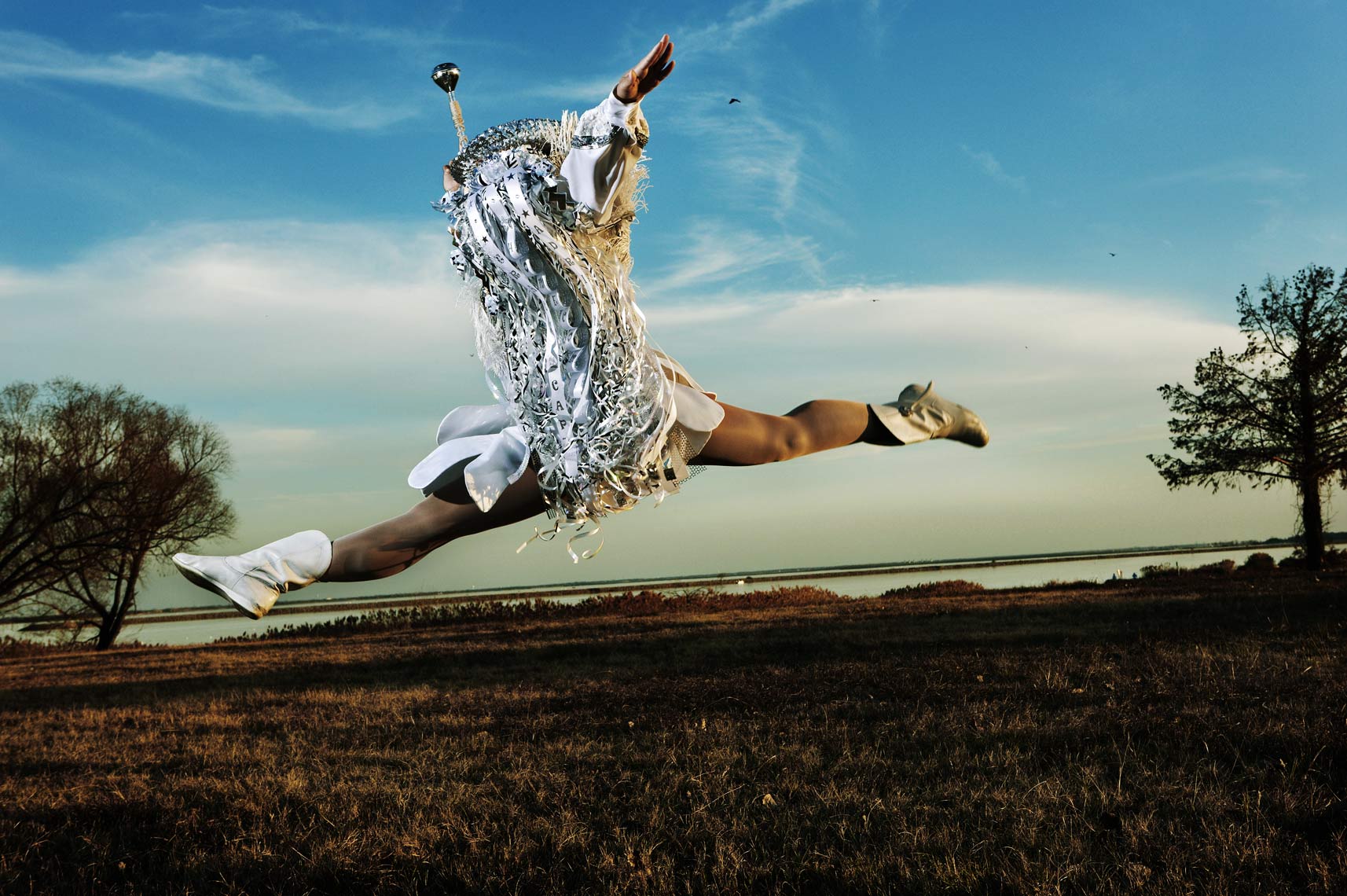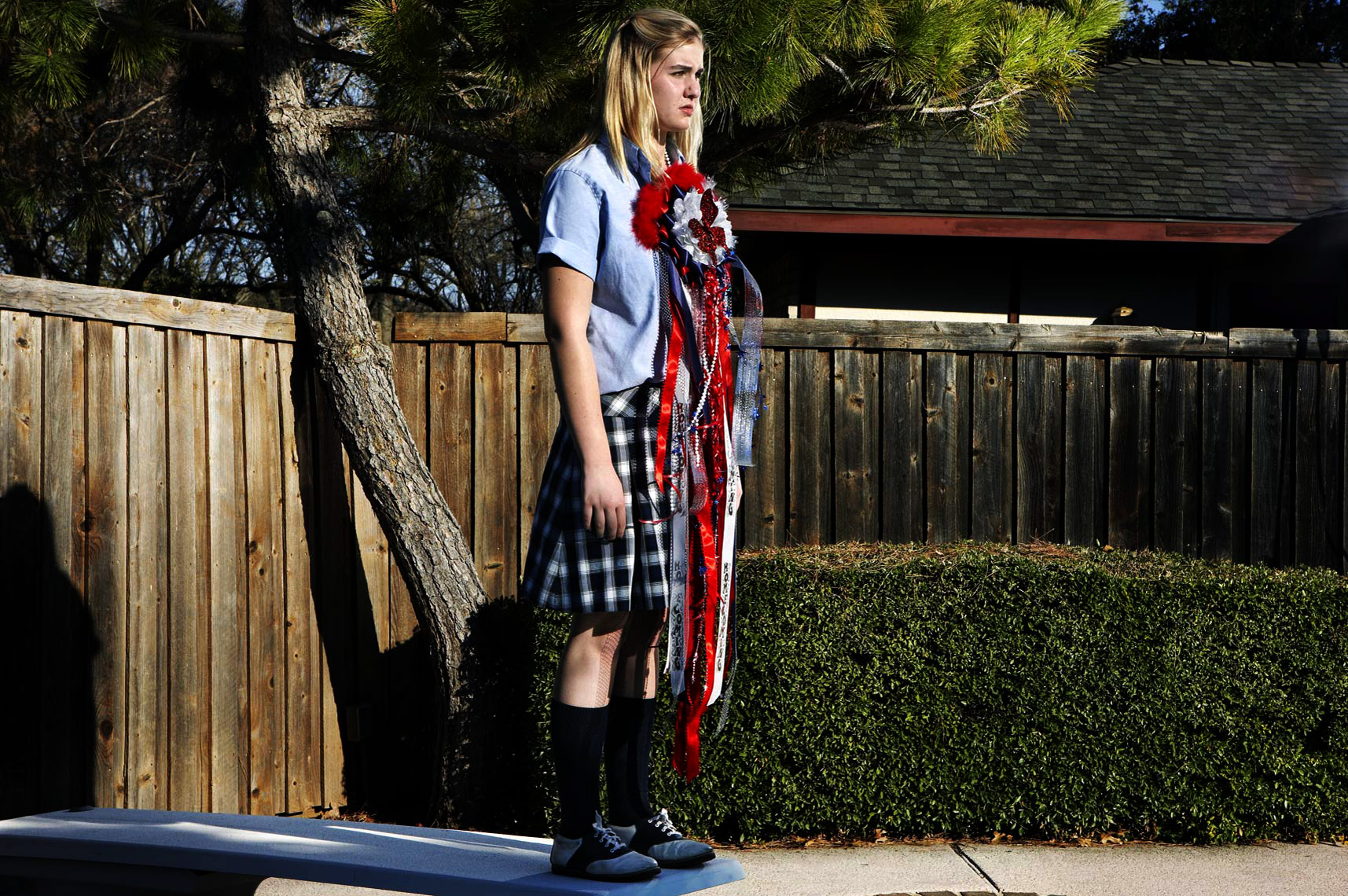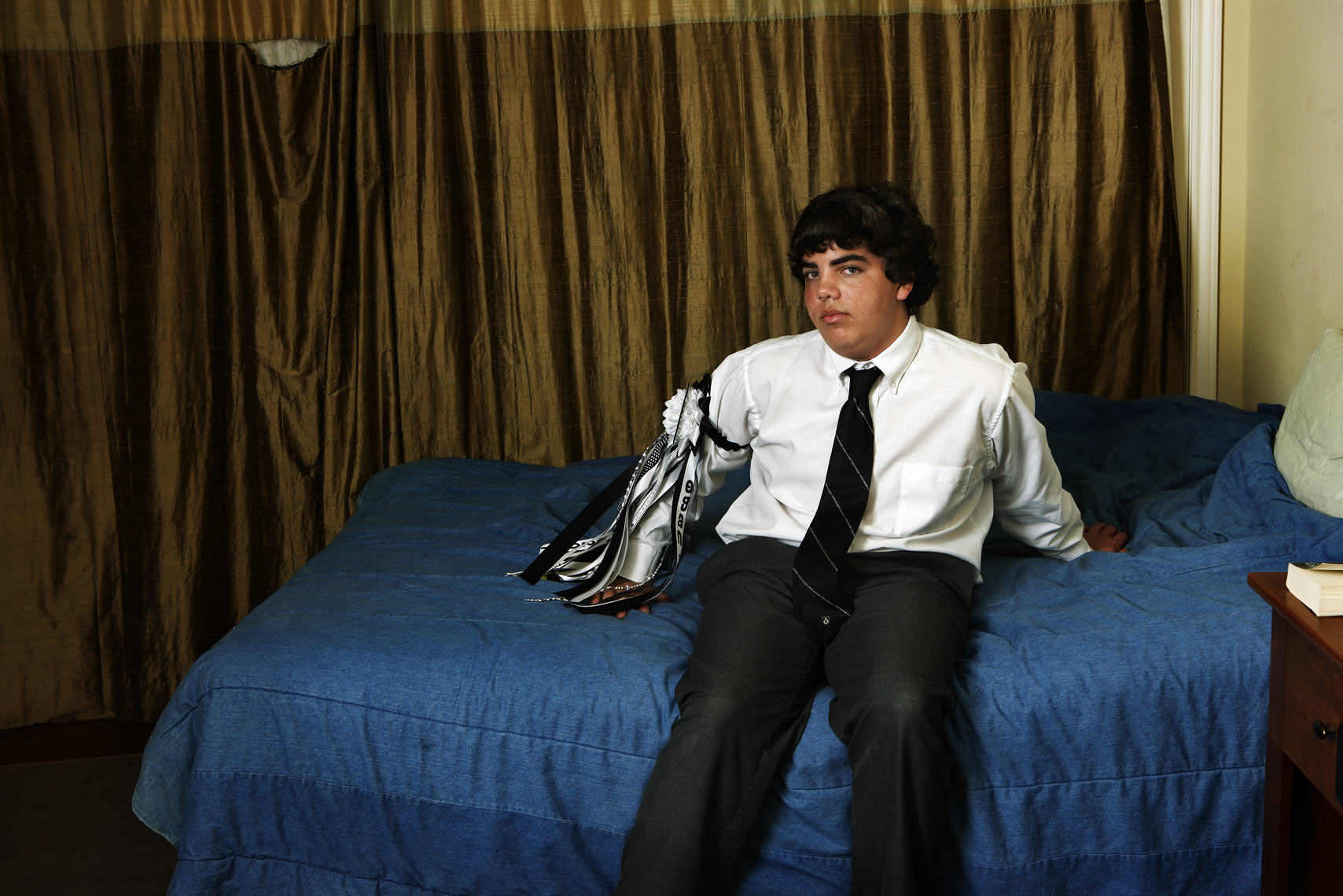
Image Credit: NancyNewberry.com
Recently one of my students came to class carrying a large mass of ribbons. With a central bow the size of a large sunflower, and gold and white strands trailing for several feet, it resembled a festive octopus. “I’m making fonts for my design class out of mums,” she explained, as she pulled out a chair for her artwork. The class then conferred the knowledge of the Texas tradition that is mum giving.
Mums are a homecoming dance tradition. The term originates from Chrysanthemum, but the mums worn by young Texans are all prize-winning-chrysanthemum big -- about the diameter of a basketball or larger. They can become very elaborate: some are filled with LED lights, others play music, and they can retail for several hundred dollars. The men’s much more modest version is called a garter. That night, another friend of mine who had also been schooled by their students on mums serendipitously posted an article to Facebook which featured internationally acclaimed photographer Nancy Newberry’s photo series, MUM – and my education on mum giving continued.

Image Credit: NancyNewberry.com
Newberry, who is a Texan, describes herself as someone “interested in the strange rituals of everyday life,” she is fascinated in particular by the lore of her home state. Reinforcing her ethos as the art-world savvy Texan, she playfully says she can be found “chasing tumbleweeds between Dallas and Marfa.” MUM, a tableau centered on the custom of mum giving, has been featured in international publications like The Guardian and Raw magazine. In an interview for Raw magazine, Newberry says, “viewing the photograph encourages a certain amount of discourse adding to the broader discussion on gift exchange.” With her talk of “the broader discussion of gift exchange” Newberry implies that rather than the cultures, which the Boasian model of anthropology gave scholars in the 1890s, we have Culture, in the monolithic sense – that all cultures may be measured equally, that all gift-giving is somehow the same – perhaps Newberry views mum giving as part of a global economy, as globalization theorists might. Nevertheless, her use of a camera to answer these questions, and her description of them as “strange,” puts her in the alienated station of an outside observer; as a part of an older ethnographic tradition.
From the project and interviews, it seems pretty transparent: Newberry’s Mum is a study of Texans as ethnographic subjects. Since my class is currently studying ethnography and photography, I brought the series in to find out exactly what rural Texans (I’d say that generally 1/3 of my students are from small towns, and 2/3 are from suburbs of Dallas or Houston) had to say about this ethnographic study of their own peer group. Flipping through the images, the students looked like they were being put on. Some laughed uncomfortably. Others cringingly added, “Oh, that’s just awful.” When asked if they would like to be photographed in this way, 100% of them agreed, they would not.

Image Credit: NancyNewberry.com
The photos have something of The Virgin Suicides about them. In one, a young man waits with bad posture, slumped on a hotel bed, a torn, shiny, cheap curtain behind him. He is seemingly waiting for that anti-climactic, post-dance de-flowering moment that so much of Coppola’s film revolves around. In another, a girl stands staring into a swimming pool fully clothed – it’s pretty transparent code for “verge of a nervous breakdown.” I get it, I guess. Being a teenager is difficult and weird, and far more psychologically complex than anyone acknowledges. But ethnographic depictions of rural people and ethnographic depictions of teenagers share a problem: even if the artist came from Texas, or was once a teenager, they have forgotten both, or the experience has crystallized in such a way as to make any sort of objective study impossible, and Newberry does claim to be capturing their culture, not her own memories of youth, or her own memories of Texas.
The images are haunting and beautiful, but I can’t shake the sense that they are all carefully curated to exude an (at this point clichéd) sense of desolation and depression. There seems an opportunity lost in posing subjects in the shape of such a narrative, when one might instead try to experience that narrative with them, or offer them a platform for expressing it themselves.
In a follow up post to this one, I will step further into the history of rural Americans as ethnographic subjects.
Recent comments
2 years 29 weeks ago
2 years 44 weeks ago
2 years 44 weeks ago
2 years 50 weeks ago
3 years 4 weeks ago
3 years 4 weeks ago
3 years 4 weeks ago
3 years 6 weeks ago
3 years 6 weeks ago
3 years 6 weeks ago